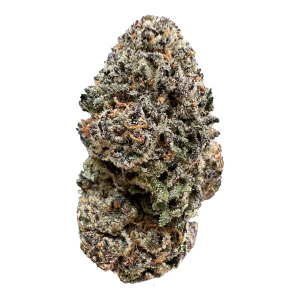How is Marijuana Graded?
Introduction
Understanding how marijuana is graded is essential for anyone looking to make informed purchases and enjoy the best possible experience. Grading impacts everything from the visual appeal to the potency and overall quality of the cannabis you consume.
The Basics of Marijuana Grading
Marijuana grading is the process of evaluating and categorizing cannabis based on various quality indicators. These factors include visual appearance, aroma, flavor, potency, and overall cannabinoid content.
Visual Appearance The visual appeal of marijuana is often the first indicator of its quality. High-quality buds are typically dense, well-trimmed, and exhibit vibrant colors ranging from deep green to purple hues. Trichomes, the tiny crystal-like structures on the surface, should be abundant, indicating a high concentration of cannabinoids.
Aroma and Flavor Terpenes, the aromatic compounds in cannabis, play a significant role in its grading. High-quality marijuana will have a strong, pleasant aroma that corresponds to its strain profile. For instance, citrusy, piney, or earthy scents are often signs of desirable terpenes.
Potency and Cannabinoid Content The potency of marijuana is measured by its THC and CBD levels. High THC content typically indicates a more potent strain, while CBD levels can suggest therapeutic benefits. Both factors are crucial in determining the overall grade of the marijuana.
The Different Grades of Marijuana
Marijuana is generally categorized into different grades, each with distinct characteristics.
Top-Shelf (AAAA AAAA+ Grade) Marijuana Top-shelf marijuana, also known as A-grade, is the highest quality available. It features dense, trichome-covered buds, a rich aroma, and high potency. Strains like Girl Scout Cookies and Blue Dream are often considered top-shelf due to their exceptional quality.
Mid-Grade (AAA – AAA+ Grade) Marijuana Mid-grade marijuana, or B-grade, is a step below top-shelf but still offers a decent experience. These buds may be slightly less dense and aromatic but still provide good potency. Mid-grade marijuana is suitable for regular use without the premium price tag.
Low-Grade (A-AA+ Grade) Marijuana Low-grade marijuana, also known as C-grade, is often characterized by loose, poorly trimmed buds with fewer trichomes. The aroma and potency are noticeably weaker. This grade is typically used for making edibles or concentrates where the quality of the flower is less critical.
Factors Affecting Marijuana Quality
Several factors can impact the quality and grade of marijuana.
Cultivation Methods The way marijuana is grown significantly affects its quality. Indoor cultivation allows for controlled environments, resulting in higher quality, while outdoor-grown cannabis can vary due to weather and pests.
Harvesting and Curing Processes Proper harvesting and curing are crucial for preserving the potency and flavor of marijuana. Poorly cured cannabis can taste harsh and degrade more quickly.
Storage Conditions Storage plays a vital role in maintaining marijuana quality. Proper storage in cool, dark, and airtight conditions helps preserve potency and prevent mold growth.
How to Assess Marijuana Quality Yourself
Evaluating marijuana quality yourself involves looking at, smelling, and feeling the buds. High-quality marijuana should look appealing, have a strong, pleasant aroma, and feel sticky to the touch due to the trichomes.
The Role of Third-Party Testing
Third-party lab testing is essential in grading marijuana. These tests provide unbiased information on cannabinoid levels, terpene profiles, and contaminants. Look for products that come with lab reports to ensure quality and safety.
Buying Quality Marijuana Online
Purchasing from reputable online dispensaries ensures you get high-quality marijuana. Trusted sources like The Natural Remedy offer detailed product descriptions, lab results, and customer reviews to help you make informed choices.
Customer Reviews and Ratings Customer reviews are invaluable for assessing marijuana quality. Look for feedback on potency, flavor, and overall satisfaction to guide your purchases.
Conclusion
Understanding how marijuana is graded helps you make better purchasing decisions and ensures a more enjoyable cannabis experience. Prioritize quality by considering factors like visual appearance, aroma, potency, and buying from reputable sources.
Unique FAQs
- What are the main factors that determine marijuana quality?
- How can I tell if marijuana is high-quality just by looking at it?
- What is the difference between A-grade and C-grade marijuana?
- Why is third-party testing important in marijuana grading?
- How does the curing process affect marijuana quality?
- What should I look for in customer reviews when buying marijuana?
- Can low-grade marijuana be used for anything other than smoking?
- How do I store marijuana to maintain its quality?
By understanding the grading process, you can ensure that you’re purchasing high-quality marijuana that meets your needs and preferences. Happy shopping!






